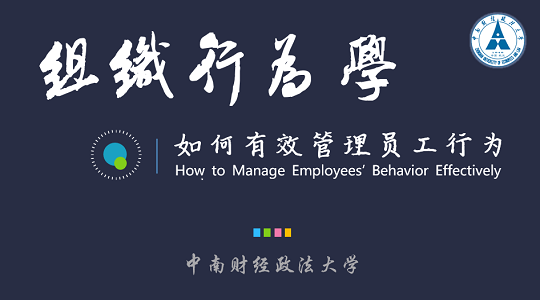
当前课程知识点:国际医学会议交际英语 > Chapter 12 Understanding Conference Etiquette > Exercise > Chapter 7 Part 2
Hello
everyone
I'm Liu Juan
from Capital Medical University
Welcome to our English for presentations
at the International Medical Conferences
Now we're going to talk about
materials and methods
Objectives
Upon completion of this section
you are expected to
know the function of
the materials and methods
get familiarized with suggested ways
to present materials and methods
grasp useful phrases
on how to present materials and methods
function
Materials and methods section
in the presentation
provides the information
by which a study’s validity is judged
Therefore
it requires a clear and precise
description of how your
experiment had been done
and the rationale for why specific
experimental procedures were chosen
This section should include
sufficient details
and references
to permit a trained scientist to evaluate
your work fully
or to repeat the experiments exactly as you did them
For hypothesis testing presentation
this section is to tell the audience
what experiments you did to answer the question
posed in the Introduction section
For descriptive studies
this section tells what experiments
you did to obtain the message
stated in the Introduction section
This section should present
what was done to answer the research question
describe how it was done
justify the experimental design
And explain how the results were analyzed
Therefore
the structure of this section
in general
should
include
describe the materials used in the study
explain how the materials
were prepared for the study
describe the research protocol
explain how measurements were made
describe what calculations were performed
and state which statistical tests
were done to analyze the data
The description of preparations
measurements
and the protocols should be organized
mainly chronologically
For clarity
when a large amount of detail must
be presented
information should be presented in
sub-sections according to topic
Materials in each section should be organized
by topic from most to least important
When all elements of the section
are well prepared
focus on how to prison to those elements
as clearly and logically as possible
Three
Suggested ways
to present materials and methods
There are many tips and strategies
presenters can use
to present materials and methods
but the followings are most powerful ones
that good presenters have used over the years
Hopefully
they will help you to nail the materials and
they will help you to nail the materials and
methods section in your next presentation
presentation
one
tense
Materials and methods section describes
what you did and how you did it
Here
the past tense and past perfect tense
are more natural because you are describing work
that has already been completed
at the time of presenting
Two
Give simple explanations
and be careful when giving numbers
This section is where the audience
is most likely to get lost
so clear explanations are fundamental
Explain things in a way that the audience
does not have to make a big mental effort
Your audience will probably
only be able to absorb
about a small part of what you are saying
so it helps
if you repeat or explain anything complex
for them
do not expect them to understand everything
the first time
If you use numerical examples
make sure the numbers appear on the slide
as it is very difficult for audience
to mentally translate the numbers
at a greater speed into their own languages
and then be able to follow the examples
Three
Give examples first
and technical explanations second
This section is one of the highlights
of your presentation
and you should have fun explaining it
It helps the audience
to follow a technical explanation
if you gave examples first
and then explain the process
If you begin with the theoretical aspect
you will probably lose the audience
and maybe get lost yourself
If you begin with a simple example
you gain the attention of the audience
and gain confidence yourself
Four
Be brief
and only talk about what is strictly necessary
Explain the steps clearly
and why your chosen methodology was suitable
or not for what you wanted to do
But again
only mention what the audience
really needs to know
in order to make sense of what you did
Five
Show only the key steps
in a process or procedure
If you are showing your audience or process
it is tempting to show them
all the steps of the process
The typical way to do this is
to cut and paste a complex diagram
from a book or paper
or to begin with a skeleton diagram
and then gradually add new parts to it
either via animation or
a series of overlapping slides
However
this has major problems
For one thing
audiences may recognize a cut and paste
It gave the idea that
you couldn't find the time
to create something specifically for them
For another
gradually building up a diagram
may take too long
and can be very tedious for the audience
Worse
if you realize that it is taking too long
you will probably speed up your explanation
and the audience may not
grasp what you are saying
What are the solutions
The solution is
to ignore any pre-existing graphics
and the start from scratch
This does not have to be a laborious process
because you only need to highlight the essential
Your aim is to guide the audience
through the highlights of the process
If something is quite complex
then break it up into manageable steps
over two or three slides
But occasionally go back to one slide or two
to highlight to the audience
the various connections.
Six
Use slide titles to help explain a process
When the main purpose
of your presentation is to explain a process
or how a piece of equipment works
It is a good idea to use your slides titles
to explain each step in the process
Each slide simply has a title
and then a diagram or picture
which you then explain
Seven
explain why you are not
describing the whole process
If you think the details
complex explanations
various tables and graphs are too demanding
or too boring for the audience
it is advisable to skip
some less important parts
You can explain
like the following
If your audience want to see every detail
If your audience want to see every detail
in your diagram
chart
table or graph
then as you show your slide
say like the following
This is a very simplified version of
This is what the prototype looks like
in very general terms
The full diagram is on my webpage
I will give you the address
at the end of the presentation
You can also use phrases that indicate that
You can also use phrases that indicate that
you are only talking in general terms
such as
for the most part
broadly, generally speaking
with one or two exceptions
as a general rule
then you can show a diagram
of the complete process
but magnify one or two parts of the process
that you would like to focus on
just show three consecutive parts of the process
and focus on the one in the middle
showing how it connects to the previous part
and the next part
highlight using a circle
or a particular color the aspect
that you want the audience to focus on
so that they will ignore the other information
use a different font and a bigger font size
Eight
Indicate where you are in a process
when you are describing a process
you cannot always maintain
full eye contact with audience
you may occasionally need to
point at the diagram
You can do this in various ways
first
you can stand up to the left or right
side of the screen
and use the laser pointer to indicate
the items you are talking about
Or you can draw on the screen
and to show the pen
you can press Control and P
to turn it off press the ESC
Nine
Tell a story
rather than sounding like a technical manual
You can involve your audience
much more if you
talk about the selection process like a story
You can use
active verbs rather than passive verbs
you can exclude the non-essential details
Thus
you can make a very technical explanation
more interesting if you tell it like a story
Ten
Minimize or cut the use of equations
formulas and calculations
Equations
formulas and calculations
are difficult and time-consuming to explain
They rarely interest to the audience
and often confuse them
and often confuse them
They may distract the audience
they start deciphering the equation
and stop listening to you
Instead of explaining equations
formulas and calculations in detail
just talk about its importance
and how it relates to your study
You can then give details in a handout
you could say
for example
I'm not going to explain
the details of this formula
You can find them on my website
which I will give to
you at the end of the presentation.
Basically
the formula says that
If you must use math
talk slowly
and go through everything step by step
Remember that people normally study equations
on paper
on paper
it is not easy for an audience
to absorb a formula
in a very short space of time
Eleven
Use active and passive forms effectively
Moving from active to passive
creates variety in the description
and not using the passive all the time
gives energy and dynamism to the description
You can use active and the passive verbs
even when describing process
in which you were
or you are not directly involved
Remember to guide the audience
by indicating on the diagram
where they are in the process and by explaining
technical vocabulary by
pointing at the relevant item
Next
we’d like to share with you
most common 11 categories
in presenting materials and methods
and some useful phrases are listed below
Category one
研究对象的选择
来源及标准
研究对象通常指病人patients
研究对象通常指病人patients
受试者subjects
健康志愿者healthy volunteers
动物animals
纳入研究
here are some examples
排除或退出研究
You can use examples as follows
Category two
研究对象的分组及标准
Category three
年龄
比如一个50岁的病人
You can use the following examples
在某年龄段范围内及平均年龄
Here are some examples
在某一年龄以上或以下
Look at these three examples
Category four
性别
Here are some examples for your reference
Category five
时间点 时间段
These are the most frequently used expressions
Category six
实验动物experimental animals
laboratory animals
试验研究论文中
应说明采用何种实验动物
动物的年龄
体重
性别
来源
饲养时间和条件
动物模型饲养方法等
For example
Category seven
借鉴他人实验方法
You can use the following examples
Category eight
实验标本的制备
Here are the most frequently used expressions
Next
表达实验方法
You can say being investigated
be measured
be diagnosed be assessed
be examined
be treated
by or using
or something or some tool
Category ten
here are some basic
here are some basic
experimental expressions
The last category is diagnosis and treatment
Here are some examples for your reference
Practice
What are the general requirement
in presenting your materials and methods
What would you say if you are not describing
the whole process
in presenting materials and methods
-Exercise
-Exercise
-Exercise
-Exercise
-Exercise




